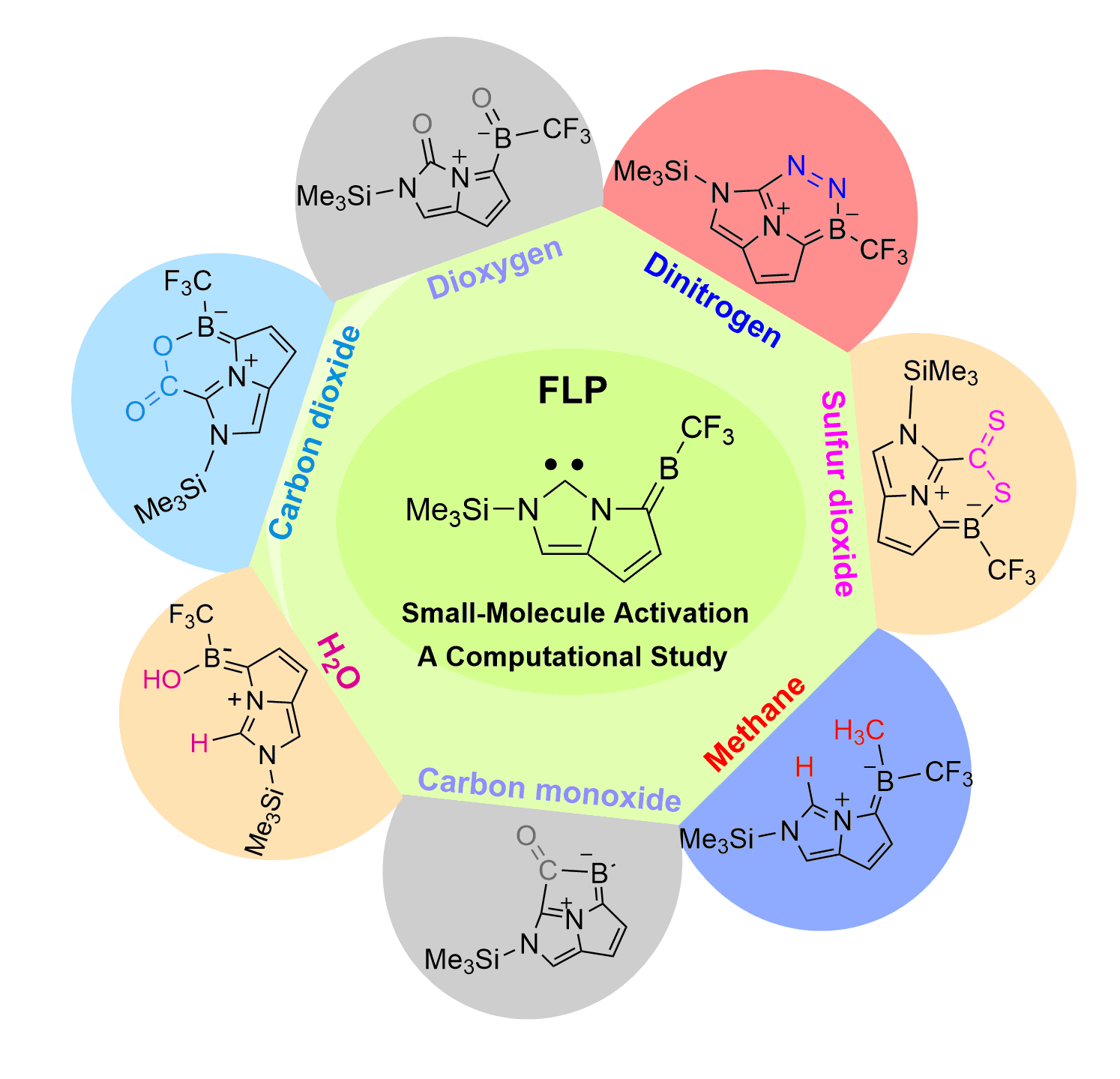Screening Carbon-Boron Frustrated Lewis Pairs for Small-Molecule Activation including N2, O2, CO, CO2, CS2, H2O and CH4: A Computational Study

Dinitrogen (N2) activation is particularly challenging under ambient conditions because of its large highest occupied molecular orbital-lowest unoccupied molecular orbital (HOMO-LUMO) gap (10.8 eV) and high bond dissociation energy (945 kJ mol–1) of the NΞN triple bond, attracting considerable attention from both experimental and theoretical chemists. However, most effort has focused on metallic systems. In contrast, nitrogen activation by frustrated Lewis pairs (FLPs) has been initiated recently via theoretical calculations. Here we perform density functional theory (DFT) calculations to screen a series of experimentally viable FLPs for small-molecule activation including N2, O2, CO, CO2, CS2, H2O and CH4. In addition, aromaticity is found to play an important role in most of these small-molecule activation. The particularly thermodynamic stabilities of the activation products and low reaction barriers could be a step forward for the development of FLP towards small-molecule activation including N2, inviting experimental chemists’ verification.
